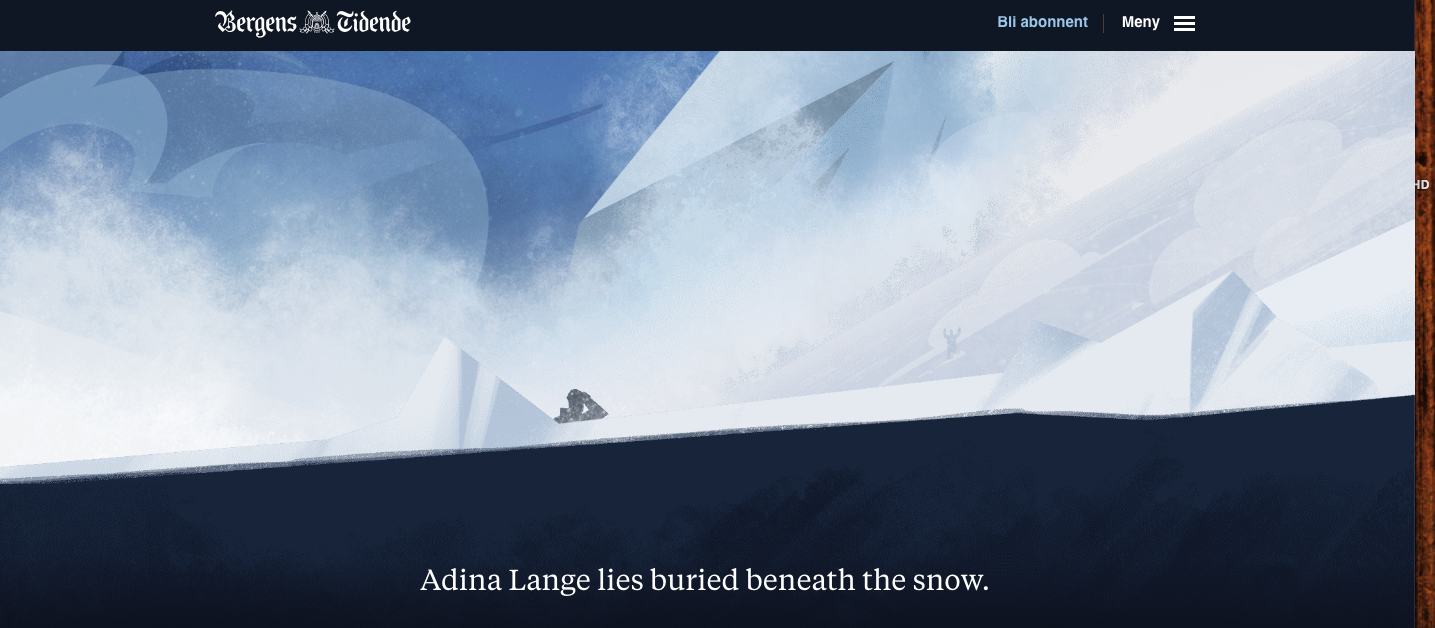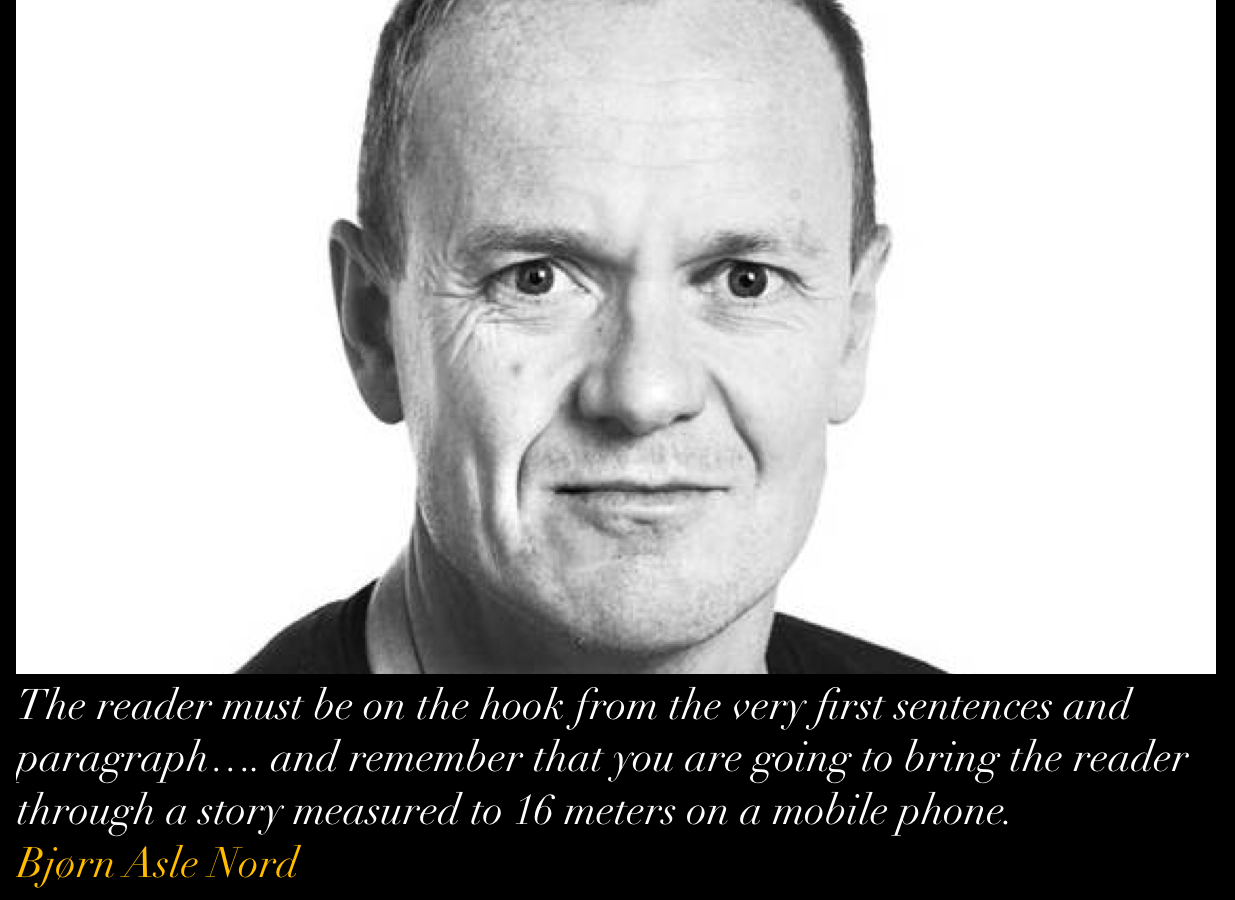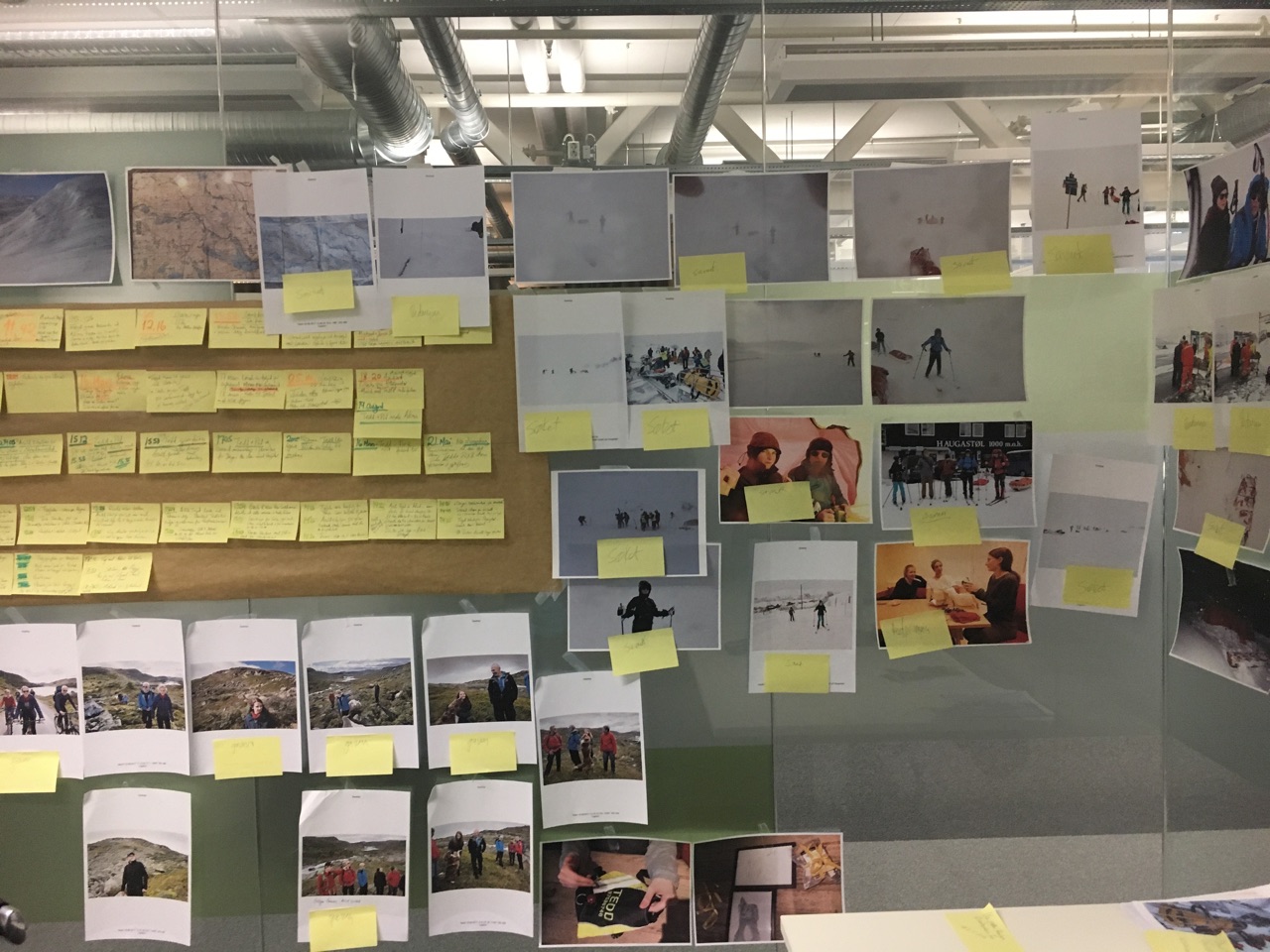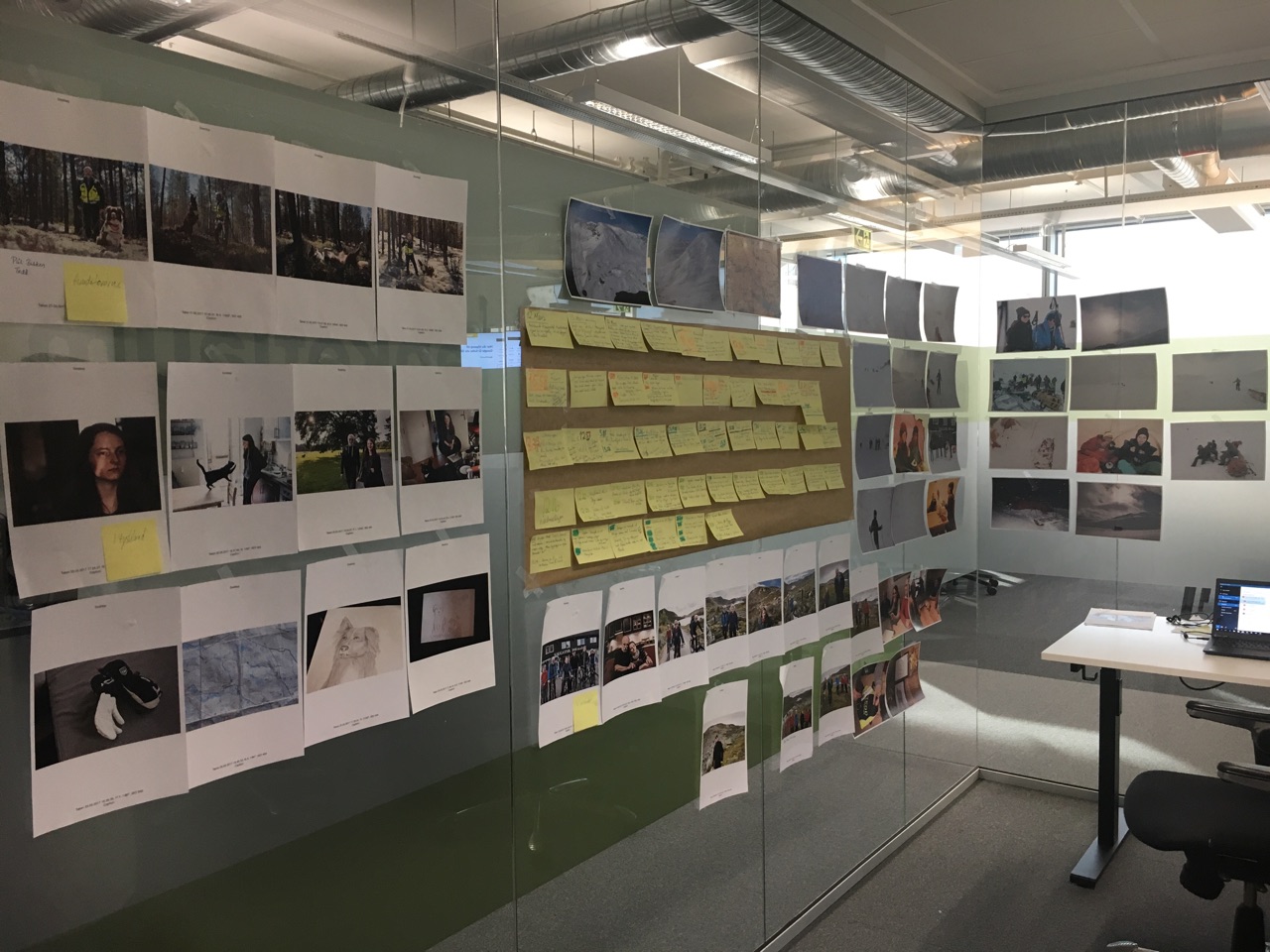As it is the Thanksgiving Holiday in the United States, I will take a break from TheMarioBlog. The next blog posting is Monday, Nov. 26
Second of two parts
Much has happened since Snow Fall was published in 2012, not only in what technology allows storytellers to do, but also what it permits us to do as users. While a majority of readers of Snow Fall probably enjoyed the story on the larger screen of their laptops, today’s multimedia stories are mostly consumed on the smallest of all screens—that of our smartphone. That, in itself, represents a major difference not only for those consuming the story but also for its creators.
That is why I think that the appearance of Five Feet Under, a dramatic and cinematic story of a rescue (and reunion) of a young woman trapped in the snow is perhaps the best way for us to celebrate the sixth birthday of Snow Fall.
It was Snow Fall that got us to think in terms of multimedia storytelling.
It was Snow Fall that showed what could be possible.
It was, in a major way, the introduction to what would be perhaps one of the greatest influences affecting journalistic genres, leading us to create linear storytelling and not just for the multimedia extravaganzas such as Snow Fall and Five Feet Under, but for ordinary stories as well.
Enter Five Feet Under

Why am I not surprised that it is in Norway, at Bergens Tidende, that this excellent follow up to Snow Fall, and one that it inspired, was published. The Scandinavians continue to be at the top of the heap when it comes to technological and journalistic innovation, not to mention years ahead of the rest in terms of strategies to monetize their content.
But, back to Five Feet Under, the story that we told you about in Monday’s blog: a young woman trapped five feet under the snow, a narrative that tells us and shows us what it was like to feel in such claustrophobic environment thinking that perhaps death would be knocking on the door soon, then a heroic rescue effort.
I was so mesmerized by the story, its presentation, the perfect weaving of narrative and visuals, that I showed it to participants in the digital storytelling workshop I was conducting for the NOZ Digital team in Hamburg. They, too, found it stunning, an example to aspire to. As I told them, this was a story that represented the Olympics of digital storytelling.
So I went back to Bjorn Asle Nord, writer of the piece, with more specific questions about his thinking process, his work methodology and his thinking about digital storytelling and mobile first approaches for the writer/designer.
Bjorn did not disappoint, and as he went into a variety of topics, I will make it easy for you to navigate through them thru the use of categories.
The inspiration
I got the idea from a simple an ordinary news piece about the incident, in my own paper.
https://www.bt.no/nyheter/lokalt/i/LzLKq/–Vi-trodde-ikke-hun-skulle-vare-i-live
When I read the report the avalanche experts report on the story I understood at once that this had material for a long-form piece of digital narrative journalism because of its many dimensions. I got goosebumps only by reading the technical report and thought about the potential: how will this work when I turn the piece from distant news and academic voice and tone into a narrative, human, intimate and deeply personal story? I was extremely curious about how she could survive for such a long time beneath the snow without an air pocket. Usually, people die trapped in the snow for 30 minutes, but she survived for over four hours until volunteers rescued her.
Would she survive, how was she rescued?
The process
Of course, once I was inspired the next step was to answer this question: how could I make a story about this? It would be a huge narrative, but I knew I wanted to do it, as there were so many universal dimensions in this story. My comments: (father and daughter relation – love, brotherhood/friendship, human and dog – /mans best friend, human vs nature, life and death, anxiety, meaning, fear/claustrophobia … the story had it all!
I was thinking that I wanted to connect this story to the idea of values At the time the story is published Norway, like many other countries, is wrestling with the subject of immigration. This story touched on a lot of emotions. I wanted to explore them. So I was convinced I would pursue the story. (move this quote to the paragraph above?)
A narrative that lifts the readers
Bjorn thought about how he could connect the incident to a larger narrative:
When I do stories, I want to put into the world we live in, lift it up to a higher level, give it a meaning, a purpose. At the time I discovered this story Norway was preparing its election. There was a debate over values in social media and among politicians. I felt something was missing from this discussions. Norwegians seemed to fear how the migrant crisis could threaten “our values. I asked myself: what was really the best thing with our society, isn’t that voluntary work, and especially the role volunteers play in our rescue operations? What is really our most unifying value? I thought about how I could connect the avalanche incident to a larger narrative and give the story a higher meaning.
Digital narrative and investigative reporting
My goal was to make a combination of digital narrative and investigative journalism. Not to reveal injustice, but to expose humanity and one of the best things in Norwegian culture; voluntary work and life-rescuing.
Inverted investigative reporting
I saw it as a kind of “inverted” investigative reporting. It was the post Trump election period and journalism in general was accused for being fake news. I wanted to show what journalism also can do – in a world of mistrust. That was a kind of extra internal motivation for me.
The visual thinking

“I filled my walls with the visual outline of the story. This story was conceptualized for mobile, so the writing outline and the visuals were all part of one process. I had to think like a movie director, writing short sentences in dramatic scenes, selecting the visuals carefully, thinking about every sentence and remembering that on the phone you scroll, so I was thinking of the scrolling process while writing.”
A cinematographic story
I felt the story worked as a movie from the very first second I dived into it.
When I read the experts report on the avalanche the film scene started in my head, I got the title of the story at once I read that she was 1,50 meter under the snow. Five Feet Under, so close to death as possible, and I felt it worked as a movie title. I could see the group of skiers buried in the landscape, frozen like statues, in front of me.
Thinking visual
I think visual when I write trying to be very aware of picking the right details and mix with action and tension, so the reader forgets she is reading. I used comparisons when I described the avalanche, the working train, the dog’s nose, the hypothermia condition, to make it easier to see.
(I got access to the photos from the tour, the group of skiers documented the whole tour, the last meal, landscape etc, so I could reconstruct the atmosphere, also the first rescuer who appeared on the avalanche site took photos, and you can see that iconic one with the father on his knees two hours after the avalanche digging and searching frantically for his daughter with a ski in his arm as a pole…)
Here is a look at the walls in Bjorn’s office as he was developing the story, a process that ran for months as he did intensive research that involved interviewing about 40 sources.


The coaching
While Bjorn knew that he would use the Times’ Snow Fall for inspiration, he also knew that he could utilize strategies and a technology that was not available in 2012. He also felt that he needed to be coached. Who else but the American journalist Tom French, a Pulitzer winning writer from the Tampa Bay Times, whom Bjorn had met while attending The Poynter Institute for Media Studies.
“From the start, I told Tom that I wanted to do a long-form narrative.
I also enlisted the help of data journalists in our Bergens Tidende team. The whole team used Snow Fall as a motivation in the way we wanted it to be differentl. We wanted to improve the way to tell such a story and agreed it should be told straightforward, with no interruption at all to the story line.”The outline of the story
And: Before I dived into the story material with my coach on the structure, Tom French, I had to make timelines. It is extremely important with such huge material, to have control and an overview, the timelines gave me that and I was able to check the fact, the chronology of events, parallel scenes and be able to structure the story.
I made three timelines (inspired by the movie Dunkirk):
1) for Adina, her father Uwe and rest of the group of skiers
2) One for the rescuers and heroes, the dog Tedd and owner Pål, the two red cross guys
3) And a third line for the rescue operation in all, the helicopters, trains, doctors etc.
So Tom and I started working on possible outlines of the story. (we discussed over Skype and decided first to write it in three parts, as a series. We identified the rawest cliffhangers that could transport the reader from paragraphs to paragraphs – one part to another. And those openings sentences on every part that would kick the story further on. We found simple titles for each part:
1. Missing
2. The Search
3. The RescueThe story and reflection
After working deeper with the material, I scattered the 4. part, The Gift, the last part had that life-affirming part, I felt the story needed reflection, a sort of resolution before the last crescendo and climax, the reunion. The last part could also be done very visually since we could observe it and just use the power of observation, dialogue, and details to move the story forward. And not at least compelling photos of Adinas reunion with the dog and rescuers.
We realized then that there were four segments we wanted to cover: Adina, her father and the skiers in the group.Then the rescuers, those heroes and their dogs. Also, the rescue operation itself, the logistics of it. But, then we knew we had to have two climaxes: the rescue and the reunion.
The start was the biggest challenge to write. I knew the ending, I had the structure. But when you write such a long narrative, for the mobile platform and also to be published in the social media environment today with an overwhelming amount of information, there is no time and space for mistakes with the opening.
“Open strong, build for stronger”
The reader must be on the hook from the very first sentences and paragraph. At the same time, you have to hold back, hold back, and remember that you are going to bring the reader through a story measured to 16 meters on a mobile phone.
I wrote several openings but ended up with going directly beneath the snow, Five Feet Under, with Adina, then move the camera to the father’s shoulder when he frantically trying to punch himself through the layer of snow… and end the opening with a classic literary cliffhanger.
When I did the outline process with my coach Tom I tried to be very aware of not spoiling too much in the start, so I could dive in avalanche drama in details later. The principle Tom has taught me is “open strong, build for stronger.”
“With Tom’s coaching, I also decided to stretch the scene of Adina beneath the snow. (I think this was crucial)
I decided to cross cut with the fathers, the group of skiers, despair when they search.
Most important: follow the main character(s) along the line of action. And again, with no big digressions or interruptions.
We wanted also the reader to feel her claustrophobia, the way she felt she was going to die. It was great that we were able to provide contrast thru the visuals, and I was so happy to see that the designer injected black backgrounds for those scenes.”
Writing and structuring for mobile
From idea, research, structuring, writing, design, it was all about fitting the story to the mobile phone platform.
When I wrote the story in Google docs I wrote the most intense parts with Adina with a lot of space between each line, short sentences. I was slowing the pace – lowering the tempo at the most dramatic moments and wanted the reader to take in Adinas feelings.
At the same time, I was thinking in contrast when I wrote, white and black, like heaven and hell, in one way, you can say. It started with the grey daily life in Leipzig… ended with praising daily life, family, friends, the joy of fresh air, meaning of life…
I thought it would work very well with those short sentences on a platform like a cell phone.
So when I met the game designer the paper hired to make the special visual elements/animation to the story, Steffen Øie, I explained how I was thinking. In a terrific way, he added the contrast with his visual design, he added the space on the most dramatic spots. We had similar thoughts about the story, he did not want to make any show-off or disturb the very strong storyline.
I also liked very much the way he designed the title of the story. He wanted to put the reader straight into the theater mode.
Reactions to Five Feet Under and data
I asked Bjorn about reaction to his story. Here is some of what he tells me:
The story is the most read behind the paywall-story in Bergens Tidende, with 60.000 views.The average reading time the first-weekend it went digital was 12 minutes, which also is a record.From the reactions, it seems quite clear that the story is very universal and cross borders and countries.
Here are are some of the feedback, some in English and some translated from Norwegian to English.
«Just finished reading and I’m wiping away tears and still shaking. Absolutely riveting. Beautifully reported, written, designed and illustrated. One of the most gripping and life-affirming stories I’ve ever read. Congratulations on this masterwork.»
Tom French, Pulitzer winning journalist
“Best story of the year might have come already in January this year. Excellent done, Bjørn Asle Nord. Even better told than Snow Fall who received a Pulitzer for “best writing”. Congratulations.”
In these times when journalism is quicker, the articles shorter and we have no time to read this long-form in-depth stuff anymore .. after one hour with tears, fascination and joy I am left with how incredibly impressive the volunteers are #masterwork
Karoline Skarstein,Tweet
Hi! I just want to say thank you, Bjørn Asle Nord, for a fantastic article. The best I have read in the paper Bergens Tidende – ever. And I have discussed the story with so many others and they all agree on that.
Ragnar Mowinckel
What a story, such skilled writing, I rarely become so touched. This is the most important reason to subscribe year after year. And such great efforts the volunteers do, in this case, and so many others.
The fear stole my breath away, the tears ran down my face, I laughed relieved when it was all over. This story I shall remember, the heroes I applaud. Bless you, guys and dog. Thanks for Five Feet Under. Best BT piece I have ever read.
Anna Spence
If you ever should pay for reading a story in a paper, do it now! Best piece of narrative journalism I have ever read.
Ronny Rene Nielsen
The Bergens Tidende team
Part One of this story in my blog
Five Feet Under: a powerful story from Bergens Tidende
https://www.garciamedia.com/blog/five-feet-under-a-powerful-story-from-bergens-tidende/
TheMarioBlog post #2955